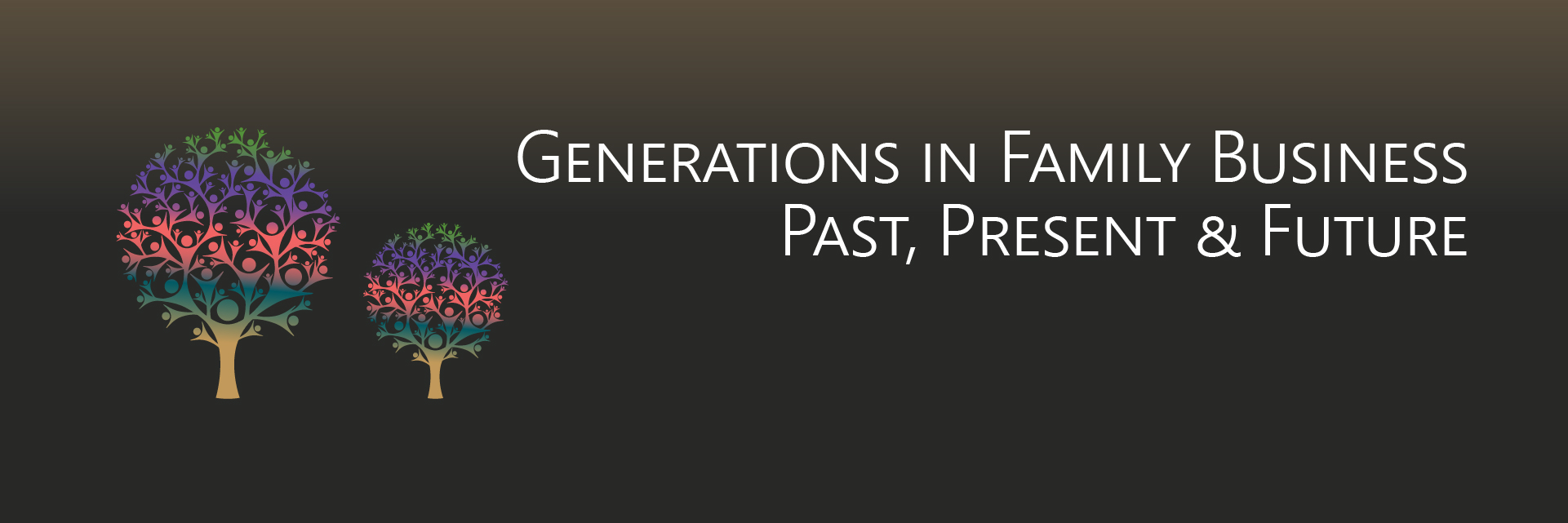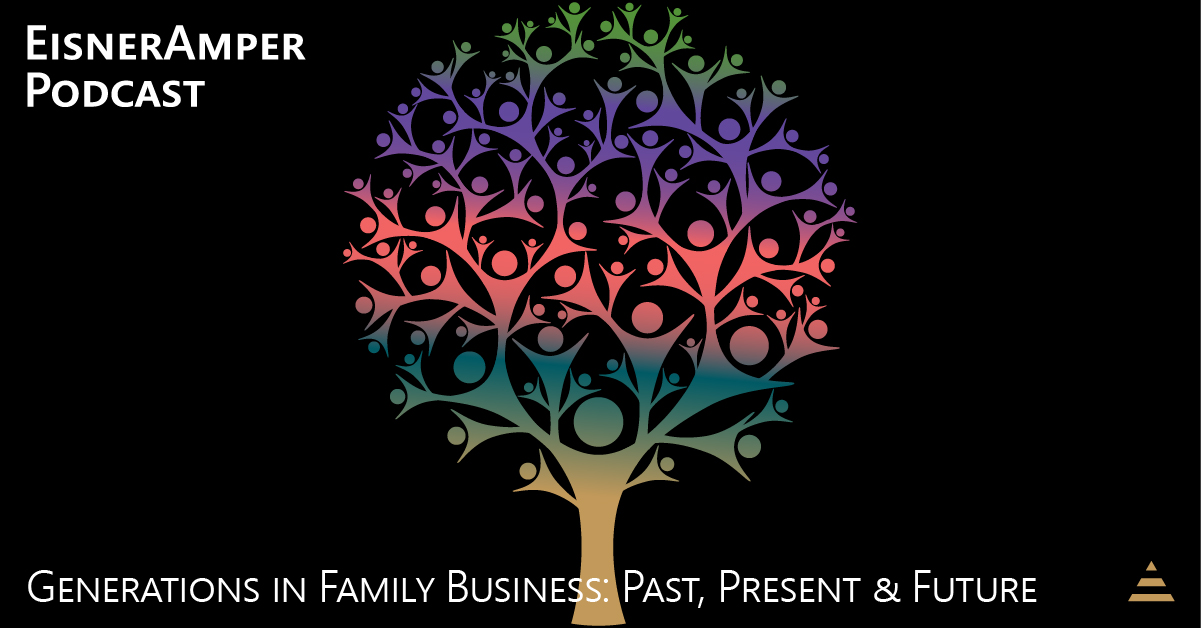
Succession Planning Process: Leadership & Development
- Published
- Jul 1, 2020
- Share
Matt Kerzner and Tim Schuster discuss the last step in the process for succession planning, leadership & development.
Transcript
Tim Schuster: Welcome to our podcast for Generations in Family Business: Past, Present and Future. Our hosts for this podcast are myself, Tim Schuster, and I'm a senior manager in the Center for Family Business Excellence, and as always is my good friend.
Matt Kerzner: Hey, Tim, this is Matt Kerzner and I'm a director in the center. How are you?
TS: Matt, great to see you.
MK: You as well, you as well. Always a pleasure, Tim.
TS:My pleasure as well. On our last podcast, we discussed execution and accountability in the succession planning process. To remind our listeners, it's a six-step process. It's transition and exit strategy, governance, growth and value enhancements, execution and accountability, leadership development, and finally, succession. So today's show, we're going to talk about the leadership development component. Matt, would you mind giving our listeners, call it, the 100,000 foot view of leadership development? I know this is going to be a fun subject too, but I'd be curious to hear your two cents.
MK: I would love to talk about this. As a HR professional, I always say people is your biggest asset, so leadership development is very critical. Some people call it supervisory, development, management development, but you know what? I believe the most successful supervisor, manager is a leader.
There's a big difference. Leadership development is very, very important. A couple of things that when we get into leadership development, it's very important for an owner or partners when they're starting to think about succession and moving onto their next phase or whatever that means to them, they've got to make sure that their bench is ready. Right? Who is ready to take over their position, but more importantly, their whole bench, right? Because entrepreneurs feel very comfortable when they're present and they can really put their fingers on everything.
TS:Yeah, they love to have that.
MK: Right? There's a lot of resistance about leaving this or it's going to be done the right way. Another thing, Tim, which is very critical, and I always tell owners, CEOs, partners, a lot of times, their days rise up to fall down.
When you start doing a job analysis, this is how much time it takes, they're not at 100%. They're at 150, 160. Because again, they're not that 40 hours, right, 2,080 hours a year person. When we start analyzing what they do, they're the CEO. They're in charge of marketing. They might have a CEO or a controller, R&D, research and development. So when somebody decides it's time for them to go and we start talking about replacing them, it's not replacing a one for one. It might be one for three or three to replace that one. So, you need to really develop your people, see what you have internally and then see what you need outside. But, I don't want our listeners to think it's just a one for one replacement, so leadership development is very, very critical.
TS:It's interesting you bring that up, Matt. I feel like in most instances, especially when I'm working with the clients that I deal with, a lot of it is these guys who are the entrepreneurs, they really don't realize it until you have them write it down. Do you think that's the best way to handle that and say, "Why don't you actually take a few moments and write down exactly what you do?" Right? Do you think that's a course? Because sometimes, it's almost planting the seed and hopefully it blossoms into a flower. But, would that be the first step you would have?
MK: Yeah, it is. Actually, I wouldn't say it's the first step. The first step I actually say is let me see your org chart, organizational chart. This is just your hierarchy of your organization, owner/CEO, and then the C-suite or the executive team, the middle management. And then, it flows down. And then, it's really what they are all doing. Yes, I do encourage when I'm working with people, especially when there's nothing memorialized. I don't want to overburden them and say, "We have to do time studies." I'm not talking about that. But, I do encourage keeping daily journals. Now, using technology, if people use Outlook Calendars, you literally can plug in throughout the day what you're doing. It has time-specific slots if you do that. Then, you can go back, color-code it, analyze it and find out what your time is being spent in. Once you do that, then you can say, "Okay, who else do I have in the organization that can take some of this on?
So, a journal or a daily list of things that you're working on or how much time is being spent on that, that will absolutely help. I do it. I ask people to do it for usually a month. I know it sounds like a lot, but if you have a notebook on your desk and you just jot it down, or you use your Outlook Calendar and plug it in, very, very helpful.
TS: Okay. No, that's wonderful. So now, let's say we have someone establish the takeover who could be internal, external, what is your process if there's a way? Again, every business is a little different. Matt, you say perfect, right? Every business is like a snowflake, right? So, it could be, in one way shape or form, this way or that in a good sense. What is usually a good time for a transition? Let's say we have someone identified, how long does it typically take for someone to say, "Hey, you know what? We're in a place where the CEO or the entrepreneur can exit at this point now," and the new person can take over?
MK: Usually, that's not an easy answer, right, because of the snowflake process. So, I actually like to work with the owners or the executive who's running HR or the person who's running HR for the organization, which usually is the owner.
That's where we say, "Okay, let's develop this clear, specific goal and strategy for individual development. Who do we have in your organization?" It's almost like forced ranking a little bit. And then, what you do is you say, "Who's your top 15%? Who's your bottom 15%? And then, who's that middle 70%?" What I always say is when you're looking at the top 15%, who is ready today? Who's ready three years from now and who is ready five years from now? This could help understand how you develop a individual developmental plan for those individuals to see if they're truly ready.
TS:Yeah, exactly. That makes sense. It's interesting too, right? Is there an instance where if you identify these individuals, do you have these conversations with them ahead of time? Or, is it one of those you identify them and say, "Let's see where the next couple of years take us"?
MK: I believe in transparent communication. It's a big part of my methodology when I work with families or businesses. However, I don't want to have the owners, the CEOs or leadership set an expectation and then have their employees take it as its literal, right, because you just don't know how people are going to perform. You got to put them in positions of testing them, stretching them, giving them assignments. So, you never want to say, "Okay, Tim, I'm going to put you on a path in five years. You're the chosen one."
You want to say, "Listen, we have a lot of faith in what you do. We do consider you a high potential. With high potential, there comes opportunities. So, we want to put a plan together one year, three years, five years for you. We want to see how you do." But, you never want to promise somebody that this is what it looks like in five years.
TS:That makes sense. They can get a sense of complacency too because it's like, well, I know I'm going to get this. Right? So, let's avoid that at all costs. Let's tie this all back together. We can even throw in strategic roadmap in there as well. So, how is this all done, the finally execution?
MK: The final execution is just making sure that all the steps and the processes are done, that you've actually taken the time and done your due diligence through that transition exit strategy. What are you going to do? Are you that fork in the road? Are you going to hold the business and transition it? Or, are you going to liquidate, go through a liquidity event and that's your succession, right? So, that's a big decision. Then, the governance that we talked about, do you have your family council? Do you have that nice balance between the family needs and the business needs, and having processes and governance around that? Is your business at the value that it needs to be in order for you to feel comfortable to have your lifestyle for the rest of your life, holding it and transitioning it to somebody else and you still have your retirement plan? Or, you want to sell the business and is the value of the business where it needs to be so you can maintain your lifestyle?
And then, we already talked at a previous podcast about execution and accountability. How do you hold yourself accountable and your team accountable that the process is moving and that you're dotting your I's, crossing your T's, doing all your proper legal paperwork, working with your employees, working with your board? Do you have all of that in place? And then, the last piece is that whole leadership development. How do you recognize talent? How do you retain the talent that you have? How do you put a path together? Once you have all of these steps in place, okay, now you have this future plan that you can now execute. That is when have a full package that's ready to call succession planning.
TS:That's amazing. No, that's great. Matt, thank you so much for being here today. Thank you for listening to Generations in Family Business: Past, Present and Future as part of the EisnerAmper podcast series. If you have any questions or there's a topic you'd like us to cover, email us at contact.eisneramper.com. Visit eisneramper.com for more information on this and a host of other topics. We look forward to have you listen in on our next EisnerAmper podcast.
Also Available On
More in this Series

Succession Planning Process: Roadmap to Successful Succession

Succession Planning Process: Transition & Exit Strategy

Succession Planning Process: Governance

Succession Planning Process: Growth and Values

Succession Planning Process: Execution & Accountability
What's on Your Mind?
Start a conversation with Timothy
Receive the latest business insights, analysis, and perspectives from EisnerAmper professionals.












